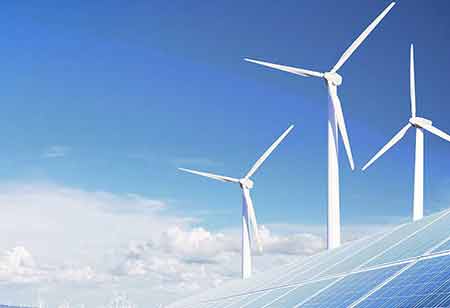Thank you for Subscribing to Energy Business Review Weekly Brief
Difference Between Solar Panels and Solar Collectors

By
Energy Business Review | Thursday, January 06, 2022
Stay ahead of the industry with exclusive feature stories on the top companies, expert insights and the latest news delivered straight to your inbox. Subscribe today.
A solar thermal collector accumulates heat using direct sunlight absorption. It is composed of a collector that converts sunlight energy into a more usable form of energy.
FREMONT, CA: A solar panel comprises a collection of photovoltaic cells. It can be employed as part of a larger photovoltaic system to generate and supply electricity to residents and other commercial applications. Solar radiation that strikes the solar panel straightaway is converted into direct current. As a result, every panel's electric energy output varies from 100 to 320 W.
A solar thermal collector accumulates heat using direct sunlight absorption. It is composed of a collector that converts sunlight energy into a more usable form of energy. Solar collectors may be known as solar parabolic apparatus for more complex installations and solar air heat for fewer complex installations.
The more complicated collectors heat water to produce steam in solar power plants, driving a turbine associated with an electric generator to produce electricity. Nevertheless, less complicated collectors are used for supplemental space heating in commercial and residential buildings.
Efficiency
The majority of solar panels are 11-15% efficient. The panels' efficiency depends on the sunlight that strikes the board and is converted into electricity. Small-surface-area solar panels are highly efficient. The orientation of the meeting, pitch or tilt of the roof and committee, temperature, and shade of the top all impact the panels' efficiency.
The following criteria determine the solar thermal collector's performance:
Area of the solar collector
The overall amount of solar radiation that strikes the collector.
The placement of the tilt and orientation of the collector.
Nevertheless, heat gain, surface area, the conversion factor, and heat loss through conduction and convection impact solar collector efficiency. Low-temperature solar collector models function at high-efficiency levels when the temperature variance is between 5 and 30°C (41 and 86°F). In comparison, medium-temperature models operate when the temperature variance is between 15 and 200°C (59 and 392°F).
The key advantages of solar panels include the following:
• Environment-friendly
• Noise-free with no moving parts
• Low maintenance cost
• Simple to install
• Promotes energy independence
• Operates effectively with beam or diffuse solar radiation.
The key benefits of solar thermal collectors incorporate the following:
• It is sustainable for high temperatures
• High efficiency
• Usage of the larger area by using inexpensive mirrors
• Redirection of concentrated light to an appropriate location through optical fibers
• Heat can be stored for power generation under overnight and cloudy conditions.






